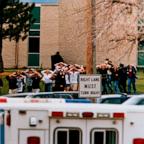Trisomy 18 and 13: More Children Like Bella Santorum Survive
A new study finds that children with Trisomy 18 and 13 live longer than thought.
April 9, 2012— -- Bella Santorum, the youngest daughter of Republican presidential hopeful Rick Santorum, was hospitalized on Friday, the second time this year she has needed such care.
Bella, age 3, suffers from Trisomy 18, a rare genetic disorder that is often considered fatal. Her survival has defied the odds. About 90 percent of children born with the disorder die in their first year of life. Santorum has discussed his daughter's condition many times on the campaign trail, describing her survival as "miraculous."
But according to a new study, a significant number of children with the condition are actually surviving to older ages, though it takes a lot of medical care to keep them going.
More than a third of hospitalizations for Trisomy 18 and the closely related Trisomy 13 over the past 15 years were for children more than a year old, the study said. In more than 10 percent of the cases, the child was beyond age 8.
Study author Dr. Chris Feudtner said the analysis, published today in the journal Pediatrics, shows that the conventional thinking that the disease is lethal is not totally accurate.
"The norm is still great difficulty with survivorship for most of the children. But to say that is true for most does not mean that is true for all," he said.
Trisomy 18 and 13 occur in children who have three chromosomes for a particular gene when there should be only two. The conditions also are closely related to Trisomy 21, the scientific term for Down syndrome.
The conditions cause symptoms like clenched hands, low birth weight, mental deficiencies, small head and jaw and an unusually shaped chest, according to the National Institutes of Health. Diseases like pneumonia that are typically not life-threatening in other children can be for those with Trisomy 13 and 18.
In January, Bella Santorum was hospitalized with pneumonia, but recovered.
For the current study, Feudtner and his colleagues analyzed data on hospitalizations for children with Trisomy 18 and Trisomy 13. As many as 1,600 hospitalizations in the U.S. during the last 15 years were for patients with Trisomy 18 and up to 900 hospitalizations were for patients with Trisomy 13. Those patients underwent 2,765 major medical procedures, for everything from cleft palate surgery to heart surgery to repairs to the gastrointestinal tract.
Dr. Robert Marion, director of the Center for Congenital Disorders at The Children's Hospital at Montefiore Medical Center, said the study reflects a shift in philosophy on how to treat children who have such severe genetic disorders.
As recently as five to ten years ago, many doctors believed it would be wise to consider ending the extensive medical intervention those children received to prolong life. Maybe it would be better for nature to take its course.
"Thankfully, this has changed in recent years. Not only do some of these children survive, they survive with a pretty good quality of life," Marion said. "In children who are doing reasonably well, we will perform surgical procedures or provide more aggressive feeding therapy in order to give the kids a chance to make it."
Still, children who survive beyond age 1, like Bella Santorum, are the exception rather than the rule.




